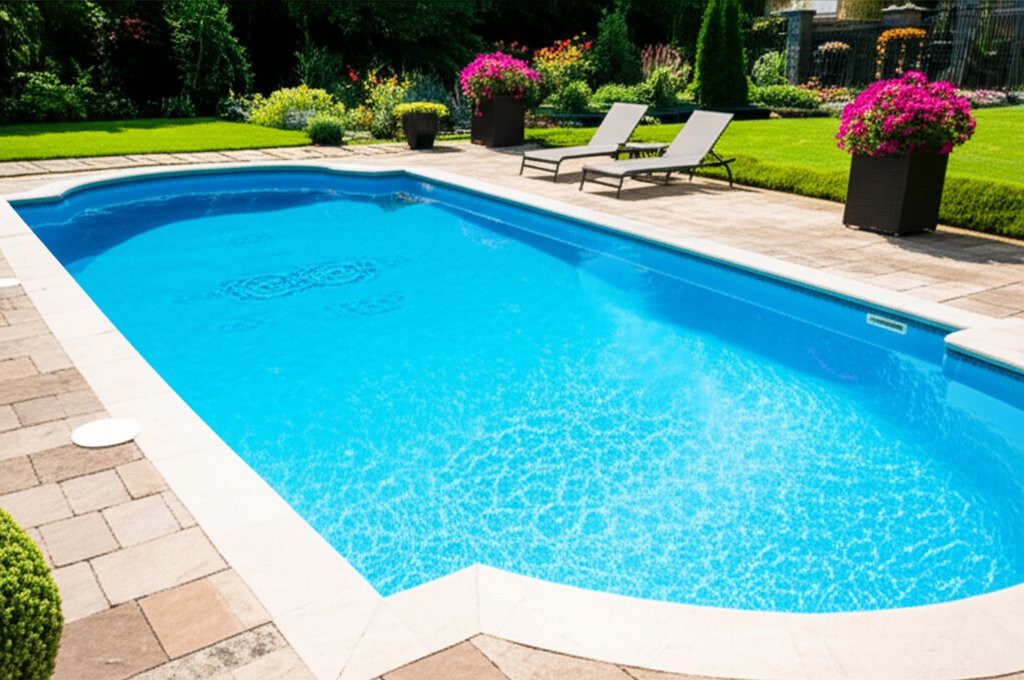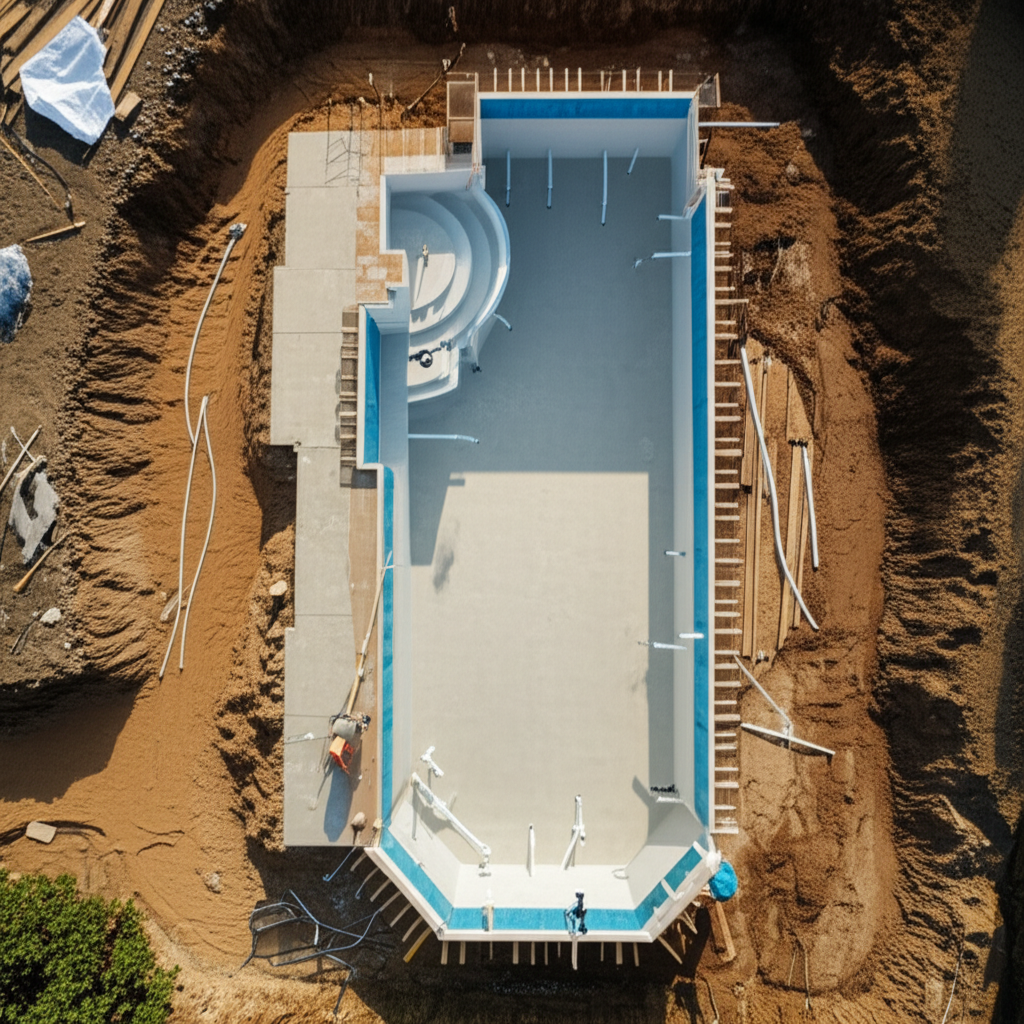- Understanding the Variables in Pool Build Time
- Optimizing Your Pool Build Time
- A Typical Breakdown of the Pool Build Process
- Setting Realistic Expectations
Pool Build Time is a critical consideration for anyone dreaming of adding a refreshing aquatic oasis to their backyard. The anticipation of lounging poolside or enjoying a family swim can often be tempered by concerns about how long the construction process will genuinely take. While the desire for a swift completion is natural, understanding the various factors that influence the timeline is essential for setting realistic expectations and even expediting the process. This guide will walk you through everything you need to know about getting your pool built efficiently without compromising on quality.
Understanding the Variables in Pool Build Time
The duration of your pool construction project can vary significantly, ranging from a few weeks to several months. This wide range is primarily due to several key factors:
1. Pool Type:
Fiberglass Pools: Generally the quickest to install, often completed from excavation to first fill in 2-4 weeks. This is because the pool shell is manufactured off-site and delivered as a single unit.
Vinyl Liner Pools: Typically take 4-8 weeks. After excavation, the walls are assembled, the plumbing and electrical are installed, and then the custom-fit vinyl liner is placed.
Concrete (Gunite/Shotcrete) Pools: These are the most custom and generally the longest to build, often requiring 2-4 months. The process involves excavation, steel rebar framing, plumbing and electrical rough-ins, gunite/shotcrete application, extensive curing time, decking, and finally, the interior finish.
2. Complexity of Design: A simple, rectangular pool will naturally have a shorter build time than an elaborate custom design featuring multiple depths, attached spas, rockeries, waterfalls, infinity edges, or extensive hardscaping. Each additional feature adds design, engineering, and construction phases.
3. Site Preparation and Access: Difficult-to-access backyards, sloped terrain, or sites requiring significant tree removal, grading, or retaining walls will inevitably prolong the initial excavation and preparation phases. Utilities (gas, water, electrical) that need relocation also add time.
4. Permitting and Inspections: Local regulations dictate the permits required for pool construction. The time it takes to obtain these permits can vary wildly, from a few days to several weeks or even months, depending on the municipality’s backlog and the completeness of your submissions. Multiple inspections throughout the build (e.g., rebar, plumbing, electrical, final) are also mandatory and depend onpector availability.
5. Weather Conditions: Nature is an unpredictable variable. Rain can halt excavation and delay concrete work. Extreme temperatures can affect curing times for plastered pools. Prolonged periods of inclement weather can push completion dates back considerably.
6. Contractor Schedule and Efficiency: A highly organized and efficient contractor with access to skilled labor and reliable material suppliers can maintain a tight schedule. However, delays can occur if the contractor is juggling too many projects, experiences labor shortages, or faces issues with material procurement.
Optimizing Your Pool Build Time
While some factors are beyond your control, there are proactive steps you can take to help minimize your pool build time:
1. Thorough Planning and Design: Finalize your pool design and all features before construction begins. Frequent changes during the build are a significant source of delays and added costs. Have all specifications, including decking materials, tile choices, and equipment, decided upon early.
2. Proactive Permitting: Initiate the permitting process as soon as your design is finalized. Work closely with your contractor to ensure all documentation is accurate and complete to avoid rejections or requests for more information, which can cause significant delays.
3. Choose the Right Pool Type for Your Timeline: If speed is paramount, a fiberglass pool is usually your best bet. If you desire custom shapes and features but still want to keep the timeline reasonable, consider a vinyl liner pool, which offers more design flexibility than fiberglass and is faster than concrete.
4. Select a Reputable and Efficient Contractor: Do your homework. Choose a pool builder with a proven track record of timely project completion, excellent communication, and strong project management skills. Check references, read reviews, and clarify their typical project duration during the initial consultation.
5. Ensure Clear Site Access: Before excavation begins, ensure the site is clear of obstacles, and there’s easy access for heavy machinery. Discuss any potential access issues with your builder beforehand.
6. Be Responsive: Promptly approve change orders (if unavoidable), respond to questions from your builder, and make decisions in a timely manner. Delays in communication can translate directly into project delays.
7. Understand the Critical Path: While your contractor manages the overall schedule, understanding the sequence of events can help you anticipate potential bottlenecks (e.g., concrete curing time, specific inspection schedules).
A Typical Breakdown of the Pool Build Process
While variations exist, here’s a general staged breakdown for a concrete pool, highlighting where “quick construction” efforts can make a difference:
Design & Engineering (2-6 weeks): This upfront stage finalizes your vision into buildable plans.
Permit Acquisition (2-8+ weeks): This can be the longest pre-construction phase. Starting early is key.
Layout & Excavation (3-7 days): Marking the pool layout and digging the hole. Clear access speeds this up.
Steel Rebar Framing & Plumbing/Electrical Rough-in (5-10 days): Building the skeleton and underground systems.
Gunite/Shotcrete Application (1-2 days): Spraying the concrete shell.
Concrete Curing (7-28 days): This is crucial and cannot be rushed for concrete pools. Adequate curing prevents future structural issues. Builders schedule other work around this.
Decking/Coping Installation (1-2 weeks): Laying the surrounding hardscape.
Tile & Interior Finish (3-7 days): Installing any accent tiles and applying the pool’s final surface (plaster, pebble, quartz).
Water Fill & Startup (3-5 days): Filling the pool and balancing the chemicals.
Final Inspections & Landscaping (Variable): Official sign-off and site restoration.
Even with meticulous planning, unforeseen issues can arise. A realistic total pool build time for a custom concrete pool is often 8-16 weeks after permits are acquired. Fiberglass and vinyl liner options significantly compress this timeline, often completing within 2-8 weeks post-permit.
Setting Realistic Expectations
While the ‘ultimate guide to quick construction’ aims to arm you with strategies, it’s vital to maintain realistic expectations. True speed in pool building is often a result of diligent planning, clear communication, and working with a highly competent professional, rather than cutting corners. Rushing the process, especially with critical steps like concrete curing or inspections, can lead to costly structural problems or violations down the road. Focus on a well-managed* project that aims for efficiency without sacrificing the integrity or longevity of your investment.
By understanding the process, making informed decisions, and partnering with the right professionals, you can ensure your pool build time is as efficient as possible, leading to years of enjoyment in your new backyard oasis.




